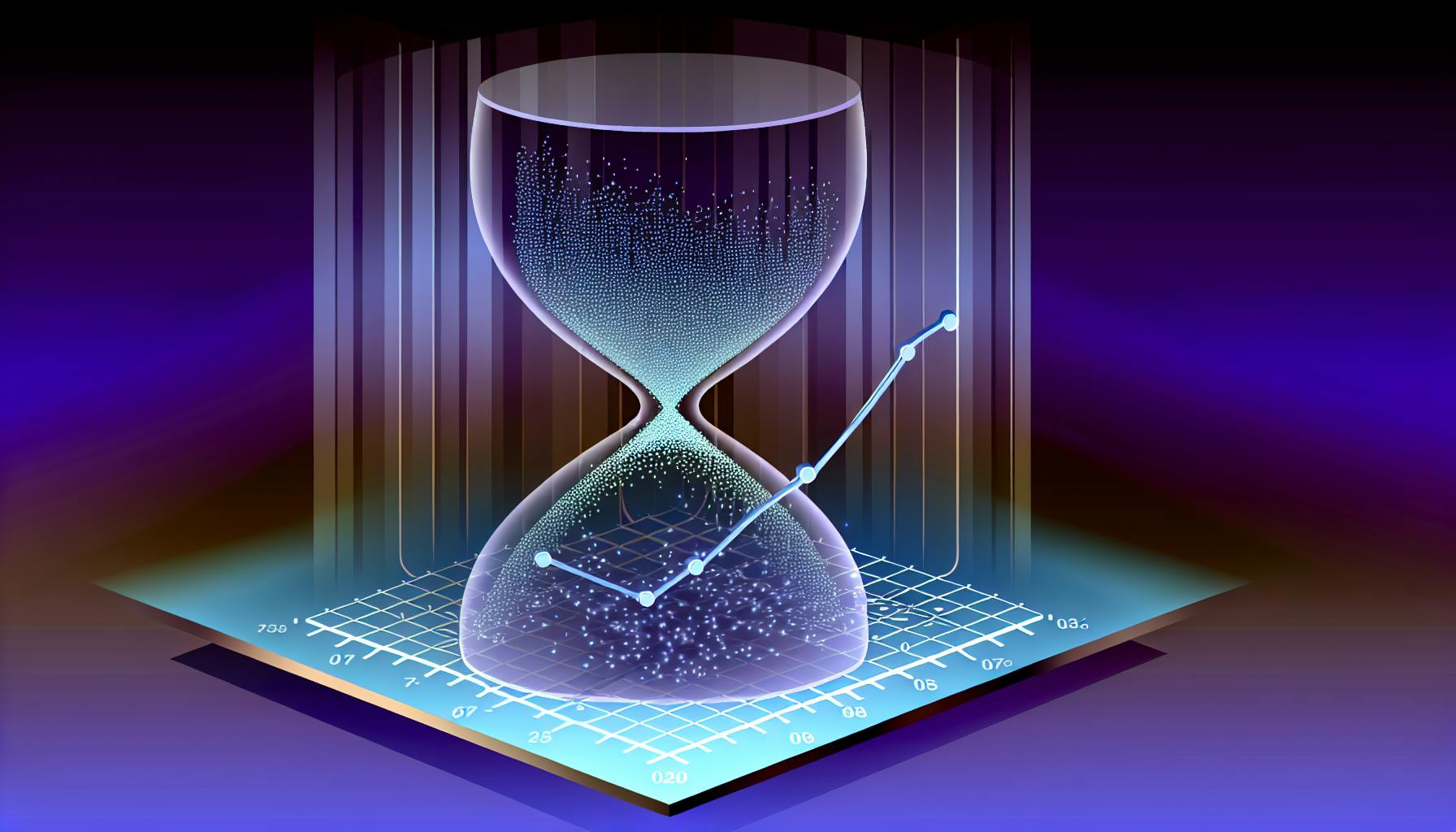Farmers would agree that manually tracking agricultural production is tedious and error-prone.
By building a Python-based tracking system, you can effortlessly collect and analyze data to boost yields and efficiency.
This article will guide you through constructing an agricultural monitoring system with Python. You'll learn how to connect sensors, manage data, and even employ machine learning for insights into crop health and production.
Introduction to Smart Agriculture with Python
Smart agriculture leverages technology like Python to optimize crop yields. By building systems to automatically track agricultural production data, farmers can gain valuable insights to improve efficiency.
Python's Role in Agricultural Production
With its vast libraries for data analysis and simple syntax, Python is well-suited for building agricultural tracking systems. Key capabilities relevant for this include:
- Data acquisition from sensors and IoT devices
- Real-time data processing
- Visualization for identifying trends
- Machine learning for yield prediction
Python provides an accessible way for farmers to leverage data.
Key Components of a Python-Based Tracking System
To build a production tracking system in Python, key components needed include:
- Sensors like soil moisture, temperature and light sensors
- GPS modules or trackers
- Dataloggers to collect sensor data
- Databases like PostgreSQL to store the data
- Python libraries like matplotlib, pandas, scikit-learn, etc. for analysis
Together these components enable automated data collection from the field.
Advantages of Python in Farm Management
Python offers practical advantages for managing farms:
- Open-source and customizable for any need
- Simpler than lower-level languages
- Scalable for expanding systems
- Rapid prototyping speeds up development
- Code can be reused across solutions
This makes Python ideal for efficient, flexible farm management.
The Intersection of IoT and Agriculture Technology
By connecting IoT sensors to a Python system, real-time crop data can be seamlessly collected. This enables:
- Continuous field monitoring
- Early disease/drought detection
- Tracking growth conditions
- Data-driven decision making
Integrating IoT with Python unlocks more precise, optimized agriculture.
How Python is used in agriculture?
Python is becoming an increasingly popular programming language for agricultural applications due to its flexibility, ease of use, and ability to integrate with other technologies. Here are some of the main ways that Python is being utilized in the agriculture industry:
Crop Monitoring and Data Collection
Python can be used to build systems that monitor crop health and growing conditions in real-time. Sensors that measure temperature, moisture, light levels and more can connect to Python programs to record and analyze the data. This allows farmers to identify issues early and take corrective action. Python libraries like matplotlib and pandas can visualize the data and reveal trends.
Control of Agricultural Machinery
Python can interface with hardware components like motors, pumps, GPS modules, etc. This allows farmers to automate tasks like controlling irrigation systems, monitoring livestock locations with GPS collars, directing autonomous tractors, and more. Python libraries like pynmea and pyserial are useful for connecting with GPS and serial devices.
Predictive Analytics and Decision Making
The data gathered from sensors and equipment can be fed into Python machine learning models to make predictions that support decision making. For example, yield predictions can inform crop planning and rotations. Models can also predict disease likelihood, optimal harvest times, livestock health issues and more.
Agricultural Robotics and Drones
Python can be used to control drones and robotic systems for agricultural applications like identifying crop issues through aerial scanning, targeted pesticide spraying, and automated harvesting. Python offers flexible options to integrate autonomy into various agricultural vehicles and mechanisms.
So in summary, Python's versatility makes it well-suited for building custom solutions for tasks like real-time monitoring, data analysis, predictive modeling, equipment control and automation in the agriculture industry. Python helps farmers and agtech companies unlock innovation and efficiency.
What is smart agriculture system using Raspberry Pi?
Raspberry Pi is a small, affordable computer that is widely used for Internet of Things (IoT) and smart agriculture projects. Here are some key things to know about using Raspberry Pi to build a smart agriculture system:
-
Low Cost and Customizable: Raspberry Pi boards start at around $35 USD, making them very budget-friendly for agriculture projects. They can connect to various sensors and modules to collect data and automate tasks. The hardware and software is open-source, allowing full customization.
-
Manages Sensors and Devices: A Raspberry Pi can interface with many types of sensors using GPIO pins - soil moisture sensors, temperature/humidity sensors, water flow meters, etc. It can control pumps, motors, and other equipment to automate irrigation, lighting, and more.
-
Data Collection and Analysis: Sensor data can be logged in databases and analyzed to gain insights. For example, tracking temperature and humidity over time shows ideal growing conditions. Analyzing soil moisture data helps create efficient watering schedules.
-
Connectivity Options: WiFi, Bluetooth, and cellular connectivity allows remote monitoring, control, and data streaming to the cloud. Raspberry Pi can send SMS or email alerts for critical events. Dashboards can be built to analyze data.
In summary, Raspberry Pis are versatile for building affordable, customizable smart agriculture systems using IoT sensors, automation equipment, and data analysis tools. The compact computer handles key functions - data collection, equipment control, connectivity and storage.
What is smart agriculture system using IoT?
Smart agriculture leverages Internet of Things (IoT) technology to help farmers monitor and manage agricultural production more efficiently.
Some key capabilities of IoT-enabled smart agriculture systems include:
-
Real-time field monitoring: Sensors track soil moisture, crop growth, pests/disease, and other parameters, providing continuous data to inform decisions.
-
Automated irrigation: Based on sensor data, the system can trigger watering when needed, optimizing water usage.
-
Yield prediction: By analyzing sensor, weather, and other data, machine learning models can forecast expected crop yields.
-
Remote access and control: Farmers can use mobile apps to view sensor dashboards, receive alerts, and control equipment like automated irrigation valves from anywhere.
The main benefits of implementing an IoT smart agriculture system are increased productivity, cost savings through efficiency, and sustainability improvements. The system gives farmers greater visibility into field conditions and more control to take timely, data-driven actions.
sbb-itb-ceaa4ed
Implementing IoT for Data Collection in Agriculture
IoT (Internet of Things) technology can provide valuable real-time data to help farmers monitor and manage agricultural production. This section explores processes for gathering field data through sensors and connecting them via communication protocols.
Choosing Sensors for Plant Growth and Soil Conditions
Key sensors for agriculture include:
-
Soil moisture sensors - Measure volumetric water content to optimize irrigation and reduce water waste. Capacitive or resistive sensors are common options.
-
Air and soil temperature sensors - Track conditions impacting plant growth and inform climate control decisions.
-
Light sensors - Assess sunlight exposure to estimate plant health and growth rates.
-
Crop canopy sensors - Use spectral reflectance to estimate vegetation indices and track plant stress, yield potential and more.
Data Transmission via IoT Protocols
Sensor data can be transmitted from the field via:
-
Cellular networks - Allow long-range connectivity but can be expensive. NB-IoT and LTE-M focus on low power IoT use cases.
-
LoRaWAN - A low-power, long-range protocol ideal for agricultural sensors across large farms.
-
WiFi - Only enables short range but allows quick and reliable data offloading.
Integrating GPS Tracking for Precision Agriculture
GPS tracking provides:
-
Accurate location data to build crop yield maps and track vehicle metrics.
-
Guidance for autonomous farm machinery to reduce overlaps and optimize routes.
-
Geo-fencing to define virtual boundaries and trigger alerts.
Python Libraries for IoT Connectivity
Python provides various libraries to interact with IoT hardware:
-
pynmea - Decodes NMEA GPS data for location tracking applications.
-
pyserial - Enables serial communication with modules like GPS receivers.
Overall, a range of sensors, protocols and software tools can facilitate precision agriculture powered by data. The insights help farmers boost production in a sustainable way.
Data Management for Smart Agriculture
Smart agriculture relies on data to drive insights and optimize operations. Effective data management is key to building an intelligent agricultural system. This involves setting up the infrastructure to collect, store, analyze, and visualize the data.
Database Selection for Agricultural Data
When it comes to storing the time-series sensor data generated on a farm, SQL and NoSQL databases both have their merits.
SQL databases like PostgreSQL provide ACID compliance for data integrity as well as robust querying through SQL. However, their schema-based nature makes it harder to store unstructured data.
NoSQL databases like MongoDB are more flexible and can scale horizontally across clusters to handle large volumes of sensor data. They work better for semi-structured data but do not provide the same querying capabilities as SQL databases.
For most farms, a hybrid approach using both SQL and NoSQL databases is recommended. Operational data can go into a relational database while time-series sensor data can be streamed into a NoSQL database.
Machine Learning for Yield Prediction and Disease Detection
Machine learning has many applications in agriculture like yield prediction, early disease detection, weather forecasting and more.
Some common techniques used are:
- Linear regression and multivariate regression for understanding variables impacting crop yield
- Time-series forecasting models like ARIMA to predict weather patterns over time
- Computer vision through convolutional neural networks to detect disease patterns in foliage
- Anomaly detection algorithms to detect outliers in sensor data
These models need to be retrained regularly using updated data from the farm to maintain accuracy.
Python Tools for Data Analysis in Agriculture
Python offers a versatile set of libraries and frameworks for analyzing agricultural data:
- Pandas - For working with tabular data and time-series data from SQL databases
- NumPy - For numerical processing and statistical modeling
- SciPy - For advanced mathematics and signal processing algorithms
- Matplotlib - Data visualization libraries for plots and graphs
- Scikit-Learn - Machine learning algorithms for predictive modeling
Python also has libraries like pynmea and pyserial to interface with GPS and serial devices. This allows connecting sensors using a Raspberry Pi and Python without added hardware costs.
Visualizing Agricultural Data with Matplotlib
Matplotlib is the most widely used Python library for data visualization and graphical plotting.
It can create various plot types like line plots, bar charts, histograms and scatter plots. These standard plots are useful for visualizing agricultural time-series data for trends and patterns.
Matplotlib also allows plotting geospatial data from GPS coordinates using pyplot. This helps visualize variables like crop growth, yield or soil nutrition across farm areas.
Interactive plots can also be built to slice data across different variables. These plots give better insights than standard reports and help farmers make data-driven decisions.
Developing a Prototype Tracking System with Python
Designing a Sensor Network for Crop Monitoring
To design a basic sensor network for monitoring crops, we can use:
- Raspberry Pi as the central controller
- GPS module (e.g. EM-406) for location tracking
- Temperature/humidity sensor (e.g. DHT11) for environmental monitoring
- Soil moisture sensor for understanding plant water needs
- Light sensor for sunlight exposure monitoring
This would provide a foundation for gathering key agricultural data. The components can be powered by a mobile power bank in the field.
Interfacing Sensors with Python for Data Acquisition
We can interface the various sensors to the Raspberry Pi using:
- UART serial communication for the GPS module
- I2C for the DHT11 temperature sensor
- Analog input for the light and soil moisture sensors
The PySerial, SMBus, and ADC Python libraries provide the interfaces. For example:
import serial
import pynmea2
port = serial.Serial("/dev/ttyS0", baudrate=9600, timeout=0.5)
while True:
data = port.readline()
if data[0:6] == "$GPRMC":
newmsg=pynmea2.parse(data)
lat=newmsg.latitude
lng=newmsg.longitude
print(lat,lng)
This prints the current GPS latitude and longitude to the console.
Mapping Agricultural Data with Python Geospatial Tools
The geospatial Python libraries like Matplotlib Basemap toolkit allow visualizing the sensor data on maps for better insights.
For example, we can plot the GPS coordinates over time to see a trace of the crop monitoring path taken:
import matplotlib.pyplot as plt
from mpl_toolkits.basemap import Basemap
fig, ax = plt.subplots(figsize=(8,8))
m = Basemap(projection='merc', llcrnrlat=lat-0.01, urcrnrlat=lat+0.01, llcrnrlon=lon-0.01, urcrnrlon=lon+0.01, resolution='h')
m.drawcoastlines()
m.drawcountries()
m.plot(longitude_data, latitude_data, linewidth=2, linestyle='-', marker='o', color='r')
plt.show()
This allows understanding the sensor coverage and planning optimization.
Employing the EM-406 GPS Module in Agriculture
The EM-406 GPS module provides location tracking using the NMEA 0183 protocol. It has a compact design with simple power and serial connections making it suitable for agricultural uses.
To integrate with a Raspberry Pi:
- Power the module from the Pi's 5V and ground pins
- Connect the transmit pin to receive pin of a Pi UART port
- Use the PySerial library to read NMEA sentences
- Parse messages with the pynmea2 library
- Extract latitude, longitude for location tracking
The module acquires satellite fix quickly outdoors providing accurate positioning. Using the data, we can geo-locate sensor measurements like soil moisture to field areas for precision agriculture.
Sustainable Farming through Advanced Tracking Systems
Agricultural production tracking systems built using Python provide numerous benefits for sustainable farming practices. Python is an accessible, versatile programming language well-suited for collecting, organizing, and analyzing agricultural data.
Benefits of a Python-Based System in Sustainable Agriculture
-
Python simplifies building customized tracking solutions for specific agricultural needs. Its extensive libraries support connecting various hardware like sensors and GPS devices to collect comprehensive field data.
-
Python enables efficient data analysis using pandas, NumPy, and machine learning libraries like scikit-learn. Farmers can uncover insights to optimize crop yields, soil health, irrigation patterns, etc.
-
Open-source Python reduces barriers for farmers to build affordable, adaptable systems. Scaling to additional sensors or fields is straightforward.
-
Python facilitates creating intuitive dashboards and visualizations so farmers can closely monitor crop status, growth conditions, and make data-driven decisions.
Scaling Up for Comprehensive Farm Management
The modular nature of Python makes it feasible to scale the basic system for large farms with hundreds of acres and numerous crop types.
-
Additional GPS sensors can be added to track more fields and sub-sections within fields. Serial modules like pyserial handle multiple sensor inputs.
-
Integrating drone and satellite imagery provides macro-level crop health data to complement field sensors. Python libraries like OpenCV facilitate image analysis.
-
Cloud databases like PostgreSQL efficiently store and query exponentially more sensor records as operations expand to more fields.
Future Trends in Agriculture Technology and Machine Learning
As agriculture leverages more IoT sensors, Python will continue increasing in usage for its flexibility in handling high sensor volumes and its machine learning capabilities.
-
Predictive analytics using neural networks can forecast crop yields, optimize planting times, model disease/pest spread, and more to boost farm productivity.
-
Computer vision techniques can automate detection of weed growth, irrigation issues, and unhealthy plants to prompt quick intervention.
-
As farms digitize further, Python dashboards will integrate real-time views across sensors, weather forecasts, market crop prices, and other data streams for data-driven management.


